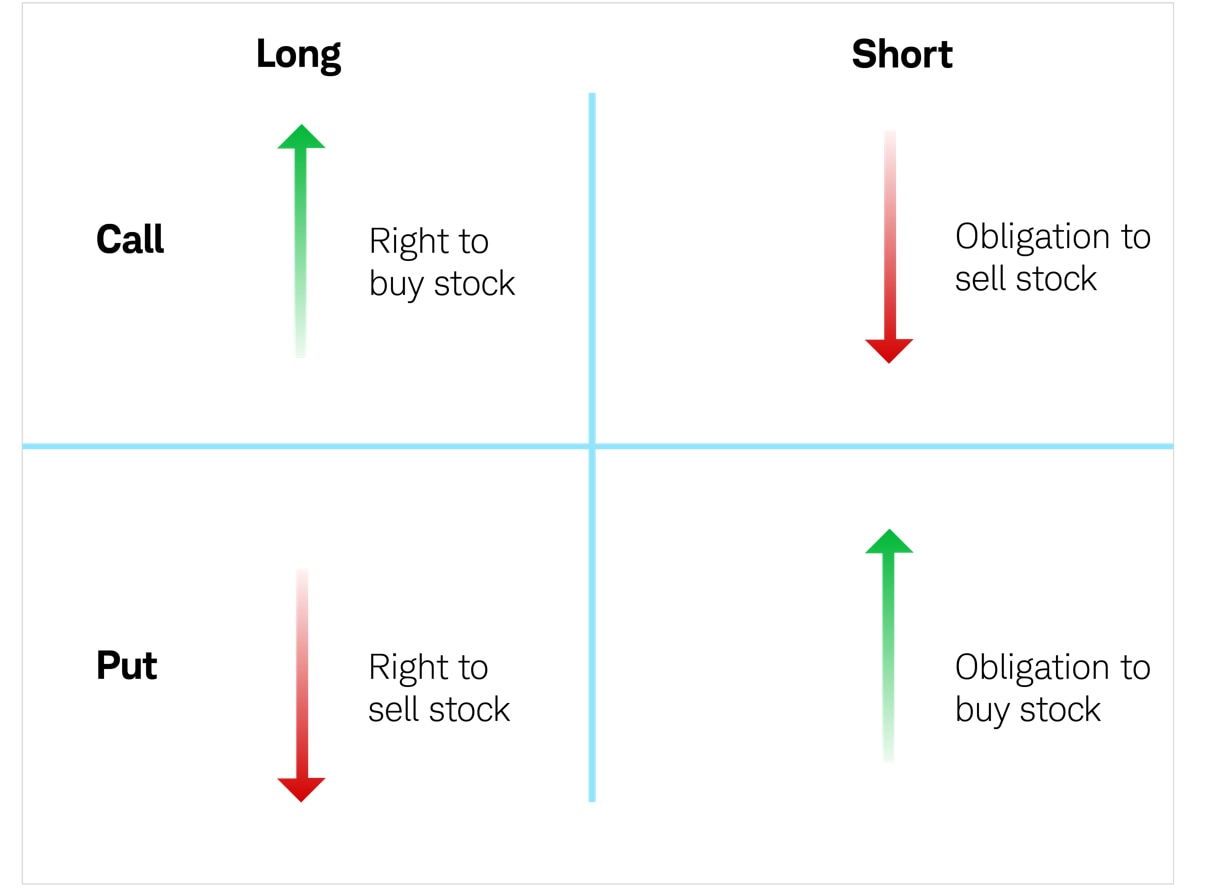The Adrenaline Rush of Options Trading
The financial markets can be a thrilling, albeit often nerve-wracking, place. Whether you’re a seasoned investor or just starting out, the prospect of making a significant return on your investment is alluring. One of the many ways to achieve this is through options trading, a strategy that involves buying or selling contracts that give the holder the right, but not the obligation, to buy or sell an underlying asset at a predetermined price on or before a specific date.

Image: www.schwab.com
Imagine you’re a tech enthusiast, and you believe a popular tech company’s stock is about to skyrocket. You could buy a call option, giving you the right to purchase the stock at a certain price in the future. If your prediction proves true, and the stock price surges, you can exercise the option and reap the rewards. But, remember, options trading is a double-edged sword. It’s highly volatile, and a wrong move could lead to substantial losses.
Understanding the Requirements for Options Trading
Options trading isn’t for the faint of heart. It requires a solid understanding of the financial markets, a willingness to learn, and an appropriate risk tolerance. Before diving headfirst into this world, you need to familiarize yourself with the essential requirements:
1. A Brokerage Account: Your Gateway to the Market
To trade options, you’ll need a brokerage account. While many brokers offer options trading services, some specialize in this area. Choosing the right broker depends on your trading style, experience, and specific needs. Features to consider include trading platforms, research tools, customer support, fees, and margin requirements. Reputable brokers like TD Ameritrade, Fidelity, and Interactive Brokers offer comprehensive options trading tools and resources.
2. Margin Requirements: The Power of Leverage
Options trading often involves margin accounts, allowing you to leverage your investment capital. Margin is essentially borrowed money from your broker, enabling you to control a larger asset position than you’d otherwise be able to afford. However, beware of the amplified risk associated with margin trading. If the market moves against you, your losses can be magnified.

Image: capitalflow.info
3. Know Your Risk Tolerance: A Crucial Assessment
Options trading can lead to significant gains, but it also comes with a higher risk profile compared to traditional stock investing. Before you even think about entering an options trade, you must assess your risk tolerance. A risk tolerance questionnaire can help you understand how much volatility you can handle. Remember, it’s crucial to only invest money you can afford to lose.
4. Education and Experience: The Foundation for Success
Successful options trading demands constant learning and refinement of your strategy. Start by gaining a fundamental understanding of option types, like calls and puts, their pricing mechanics, and how they work in various market conditions. Online courses, books, and educational resources can help you build a solid foundation.
5. A Solid Trading Plan: Mapping Out Your Strategy
A well-defined trading plan is essential for success. It should outline your investment goals, risk management strategies, entry and exit points, and position sizing. A trading plan helps you stay disciplined, minimize emotional decision-making, and stick to your strategy.
Navigating the World of Options Trading: Tips and Expert Advice
Options trading can be daunting, but it can be a rewarding experience if approached strategically. Here are some tips to help you navigate the world of options trading:
1. Start Small and Gradually Increase Your Exposure
Don’t get carried away by the potential for substantial profits. Begin with small trades to test your strategy and build experience. As your confidence and understanding grow, you can gradually increase your position sizes.
2. Use Stop-Loss Orders: Protecting Your Portfolio
Stop-loss orders are your best friends in options trading. They automatically exit your trades when the price reaches a predetermined level, limiting potential losses. Employing stop-loss orders adds a layer of protection to your portfolio.
3. Research and Analysis: The Key to Informed Decisions
Options trading demands meticulous research and analysis. Before entering any trade, understand the underlying asset, its historical price movements, market trends, and potential catalysts. Consider fundamental analysis, technical analysis, and market sentiment to inform your trading decisions.
4. Stay Updated on Market Developments
The financial markets are constantly in flux. Staying updated on news events, market reports, and economic indicators can significantly influence your options trading strategies. Subscribe to reputable news sources, follow financial experts on social media, and participate in relevant online forums to stay ahead of the curve.
Frequently Asked Questions
Q: What are the best options trading strategies?
A: There are many strategies, and the best choice depends on your risk tolerance, market conditions, and investment goals. Popular ones include covered calls, cash-secured puts, and selling volatility.
Q: How can I manage my risk?
A: Risk management in options trading involves defining your risk tolerance, using stop-loss orders, and diversifying your portfolio. It’s essential to never risk more than you can afford to lose.
Q: What are the risks associated with options trading?
A: Options trading carries a high level of risk, including the possibility of losing your entire investment. Factors like leverage, time decay, and market volatility contribute to this risk.
Options Trading Requirements
Conclusion: Embark on Your Options Trading Journey
The world of options trading can be both exciting and challenging. Understanding the requirements, navigating potential risks, and learning effective strategies are essential for success. Remember, knowledge is your most valuable asset. By educating yourself, developing a solid trading plan, and staying updated on market developments, you can embark on a rewarding options trading journey.
Are you interested in learning more about options trading? If so, let us know in the comments below!






